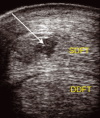Cell phenotypic variation in normal and damaged tendons
- PMID: 17696903
- PMCID: PMC2517321
- DOI: 10.1111/j.1365-2613.2007.00549.x
Cell phenotypic variation in normal and damaged tendons
Abstract
Injuries to tendons are common in both human athletes as well as in animals, such as the horse, which are used for competitive purposes. Furthermore, such injuries are also increasing in prevalence in the ageing, sedentary population. Tendon diseases often respond poorly to treatment and require lengthy periods of rehabilitation. The tendon has a unique extracellular matrix, which has developed to withstand the mechanical demands of such tensile-load bearing structures. Following injury, any repair process is inadequate and results in tissue that is distinct from original tendon tissue. There is growing evidence for the key role of the tendon cell (tenocyte) in both the normal physiological homeostasis and regulation of the tendon matrix and the pathological derangements that occur in disease. In particular, the tenocyte is considered to have a major role in effecting the subclinical matrix degeneration that is thought to occur prior to clinical disease, as well as in the severe degradative events that occur in the tendon at the onset of clinical disease. Furthermore, the tenocyte is likely to have a central role in the production of the biologically inadequate fibrocartilaginous repair tissue that develops subsequent to tendinopathy. Understanding the biology of the tenocyte is central to the development of appropriate interventions and drug therapies that will either prevent the onset of disease, or lead to more rapid and appropriate repair of injured tendon. Central to this is a full understanding of the proteolytic response in the tendon in disease by such enzymes as metalloproteinases, as well as the control of the inappropriate fibrocartilaginous differentiation. Finally, it is important that we understand the role of both intrinsic and extrinsic cellular elements in the repair process in the tendon subsequent to injury.
Figures



Similar articles
-
Further characterisation of an experimental model of tendinopathy in the horse.Equine Vet J. 2013 Sep;45(5):642-8. doi: 10.1111/evj.12035. Epub 2013 Feb 28. Equine Vet J. 2013. PMID: 23448172
-
What understanding tendon cell differentiation can teach us about pathological tendon ossification.Histol Histopathol. 2015 Aug;30(8):901-10. doi: 10.14670/HH-11-614. Epub 2015 Apr 8. Histol Histopathol. 2015. PMID: 25851144 Review.
-
Cellular and Matrix Dynamics of the Equine Tendon.Vet Clin North Am Equine Pract. 2025 Aug;41(2):251-263. doi: 10.1016/j.cveq.2025.04.007. Epub 2025 Jun 14. Vet Clin North Am Equine Pract. 2025. PMID: 40517033 Review.
-
Capacity for sliding between tendon fascicles decreases with ageing in injury prone equine tendons: a possible mechanism for age-related tendinopathy?Eur Cell Mater. 2013 Jan 8;25:48-60. doi: 10.22203/ecm.v025a04. Eur Cell Mater. 2013. PMID: 23300032
-
Tendinopathy--from basic science to treatment.Nat Clin Pract Rheumatol. 2008 Feb;4(2):82-9. doi: 10.1038/ncprheum0700. Nat Clin Pract Rheumatol. 2008. PMID: 18235537 Review.
Cited by
-
Altered fate of tendon-derived stem cells isolated from a failed tendon-healing animal model of tendinopathy.Stem Cells Dev. 2013 Apr 1;22(7):1076-85. doi: 10.1089/scd.2012.0555. Epub 2012 Dec 16. Stem Cells Dev. 2013. PMID: 23106341 Free PMC article.
-
TGF-β Family Signaling in Mesenchymal Differentiation.Cold Spring Harb Perspect Biol. 2018 May 1;10(5):a022202. doi: 10.1101/cshperspect.a022202. Cold Spring Harb Perspect Biol. 2018. PMID: 28507020 Free PMC article. Review.
-
Investigating tendon mineralisation in the avian hindlimb: a model for tendon ageing, injury and disease.J Anat. 2013 Sep;223(3):262-77. doi: 10.1111/joa.12078. Epub 2013 Jul 5. J Anat. 2013. PMID: 23826786 Free PMC article.
-
Effect of Fibrin Formulation on Initial Strength of Tendon Repair and Migration of Bone Marrow Stromal Cells in Vitro.J Bone Joint Surg Am. 2015 Nov 4;97(21):1792-8. doi: 10.2106/JBJS.O.00292. J Bone Joint Surg Am. 2015. PMID: 26537167 Free PMC article.
-
The influence of collagen-glycosaminoglycan scaffold relative density and microstructural anisotropy on tenocyte bioactivity and transcriptomic stability.J Mech Behav Biomed Mater. 2012 Jul;11:27-40. doi: 10.1016/j.jmbbm.2011.12.004. Epub 2011 Dec 24. J Mech Behav Biomed Mater. 2012. PMID: 22658152 Free PMC article.
References
-
- Alfredson H, Lorentzon M, Backman S, Backman A, Lerner UH. cDNA-arrays and real-time quantitative PCR techniques in the investigation of chronic achilles tendinosis. J. Orthop. Res. 2003;21:970–975. - PubMed
-
- Astrom M, Rausing A. Chronic Achilles tendinopathy. A survey of surgical and histopathologic findings. Clin. Orthop. Relat. Res. 1995;316:151–164. - PubMed
-
- Barbero A, Ploegert S, Heberer M, Martin I. Plasticity of clonal populations of dedifferentiated adult human articular chondrocytes. Arthritis Rheum. 2003;48:1315–1325. - PubMed
-
- Berenson MC, Blevins FT, Plaas AHK, Vogel KG. Proteoglycans of human rotator cuff tendons. J. Orthop. Res. 1996;14:518–525. - PubMed
-
- Bosch P, Musgrave DS, Lee JY, et al. Osteoprogenitor cells within skeletal muscle. J. Orthop. Res. 2000;18:933–944. - PubMed
Publication types
MeSH terms
Substances
Grants and funding
LinkOut - more resources
Full Text Sources
Medical

